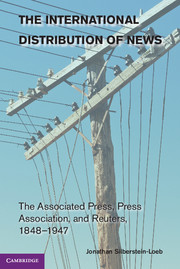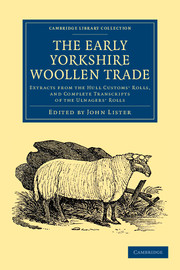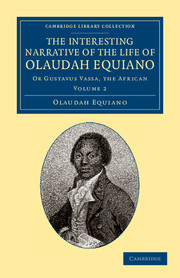Refine search
Actions for selected content:
26946 results in Economic history
5 - Banking stability, shareholder liability and bank capital
-
- Book:
- Banking in Crisis
- Published online:
- 05 July 2014
- Print publication:
- 10 July 2014, pp 102-139
-
- Chapter
- Export citation
Bibliography
-
- Book:
- Banking in Crisis
- Published online:
- 05 July 2014
- Print publication:
- 10 July 2014, pp 221-243
-
- Chapter
- Export citation
7 - Banking stability and bank regulation
-
- Book:
- Banking in Crisis
- Published online:
- 05 July 2014
- Print publication:
- 10 July 2014, pp 173-203
-
- Chapter
- Export citation
Index
-
- Book:
- Banking in Crisis
- Published online:
- 05 July 2014
- Print publication:
- 10 July 2014, pp 244-253
-
- Chapter
- Export citation
Mortgages for machinery: credit and industrial investment in pre-World War I Brazil
-
- Journal:
- Financial History Review / Volume 21 / Issue 2 / August 2014
- Published online by Cambridge University Press:
- 08 July 2014, pp. 191-212
-
- Article
- Export citation

Banking in Crisis
- The Rise and Fall of British Banking Stability, 1800 to the Present
-
- Published online:
- 05 July 2014
- Print publication:
- 10 July 2014

The International Distribution of News
- The Associated Press, Press Association, and Reuters, 1848–1947
-
- Published online:
- 05 July 2014
- Print publication:
- 24 February 2014

The Early Yorkshire Woollen Trade
- Extracts from the Hull Customs' Rolls, and Complete Transcripts of the Ulnagers' Rolls
-
- Published online:
- 05 July 2014
- Print publication:
- 18 April 2013
- First published in:
- 1924

The Interesting Narrative of the Life of Olaudah Equiano
- Or Gustavus Vassa, the African
-
- Published online:
- 05 July 2014
- Print publication:
- 06 June 2013
- First published in:
- 1789
The United States and the Global Economy: From Bretton Woods to the Current Crisis. ByFrederick S. Weaver. Lanham, Md.: Rowman & Littlefield, 2011. xi + 175 pp. Tables, bibliography, notes, index. Cloth, $29.95. ISBN: 978-1-4422-0889-6.
-
- Journal:
- Business History Review / Volume 88 / Issue 2 / Summer 2014
- Published online by Cambridge University Press:
- 14 August 2014, pp. 436-437
- Print publication:
- Summer 2014
-
- Article
- Export citation
Tesla: Inventor of the Electrical Age. ByW. Bernard Carlson. Princeton: Princeton University Press, 2013. xiii + 500 pp. Illustrations, photographs, notes, index. Cloth, $29.95. ISBN: 978-0-691-05776-7.
-
- Journal:
- Business History Review / Volume 88 / Issue 2 / Summer 2014
- Published online by Cambridge University Press:
- 14 August 2014, pp. 394-396
- Print publication:
- Summer 2014
-
- Article
- Export citation
Taiwan's PC Industry, 1976–2010: The Evolution of Organizational Capabilities
-
- Journal:
- Business History Review / Volume 88 / Issue 2 / Summer 2014
- Published online by Cambridge University Press:
- 14 August 2014, pp. 329-357
- Print publication:
- Summer 2014
-
- Article
-
- You have access
- Export citation
The Mortal Sea: Fishing the Atlantic in the Age of Sail. ByW. Jeffrey Bolster. Cambridge, Mass.: Harvard University Press, 2012. xi + 378 pp. Photographs, maps, illustrations, glossary, figures, appendix, notes, index. Cloth, $29.95. ISBN: 978-0-674-04765-5.
-
- Journal:
- Business History Review / Volume 88 / Issue 2 / Summer 2014
- Published online by Cambridge University Press:
- 14 August 2014, pp. 389-391
- Print publication:
- Summer 2014
-
- Article
- Export citation
Steel's: A Forgotten Stock Market Scandal from the 1920s. ByDave Dyer. Syracuse: Syracuse University Press, 2013. xxx + 157 pp. Illustrations, photographs, references, index. Cloth, $24.95. ISBN: 978-0-8156-10120.
-
- Journal:
- Business History Review / Volume 88 / Issue 2 / Summer 2014
- Published online by Cambridge University Press:
- 14 August 2014, pp. 391-394
- Print publication:
- Summer 2014
-
- Article
- Export citation
Autonomous State: The Struggle for a Canadian Car Industry from OPEC to Free Trade. ByDimitry Anastakis. Toronto: University of Toronto Press, 2013. xviii + 549 pp. Photographs, map, illustrations, appendix, bibliography, notes, index. Cloth, $90.00; paper, $39.95. ISBN: Cloth, 978-1-4426-4504-2; paper, 978-1-4426-1297-6.
-
- Journal:
- Business History Review / Volume 88 / Issue 2 / Summer 2014
- Published online by Cambridge University Press:
- 14 August 2014, pp. 401-404
- Print publication:
- Summer 2014
-
- Article
- Export citation
BHR volume 88 issue 2 Cover and Back matter
-
- Journal:
- Business History Review / Volume 88 / Issue 2 / Summer 2014
- Published online by Cambridge University Press:
- 14 August 2014, pp. b1-b5
- Print publication:
- Summer 2014
-
- Article
-
- You have access
- Export citation
Western Union and the Creation of the American Corporate Order, 1845–1893. ByJoshua D. Wolff. New York: Cambridge University Press, 2013. xi + 305 pp. Index. Cloth, $90.00. ISBN: 978-1-107-01228-8.
-
- Journal:
- Business History Review / Volume 88 / Issue 2 / Summer 2014
- Published online by Cambridge University Press:
- 14 August 2014, pp. 384-386
- Print publication:
- Summer 2014
-
- Article
- Export citation
The House of Rothschild in Spain, 1812–1941. ByMiguel A. López-Morell. Translated by Stephen P. Hasler. Burlington, Vt.: Ashgate, 2013. xviii + 449 pp. Illustrations, photographs, figures, tables, appendix, bibliography, index. Cloth, $144.95. ISBN: 978-0-7546-6800-8.
-
- Journal:
- Business History Review / Volume 88 / Issue 2 / Summer 2014
- Published online by Cambridge University Press:
- 14 August 2014, pp. 404-406
- Print publication:
- Summer 2014
-
- Article
- Export citation
Transition to an Industrial South: Athens, Georgia, 1830–1870. ByMichael J. Gagnon. Baton Rouge: Louisiana State University Press, 2012. xvii + 290 pp. Maps, figures, tables, bibliography, notes, index. Cloth, $48.95. ISBN: 978-0-8071-4508-1.
-
- Journal:
- Business History Review / Volume 88 / Issue 2 / Summer 2014
- Published online by Cambridge University Press:
- 14 August 2014, pp. 381-384
- Print publication:
- Summer 2014
-
- Article
- Export citation
Arsenal of Democracy: The American Automobile Industry in World War II. ByCharles K. Hyde. Detroit: Wayne State University Press, 2013. xvi + 248 pp. Photographs, notes, index. Cloth, $39.95. ISBN: 978-0-8143-3951-0.
-
- Journal:
- Business History Review / Volume 88 / Issue 2 / Summer 2014
- Published online by Cambridge University Press:
- 14 August 2014, pp. 399-401
- Print publication:
- Summer 2014
-
- Article
- Export citation
